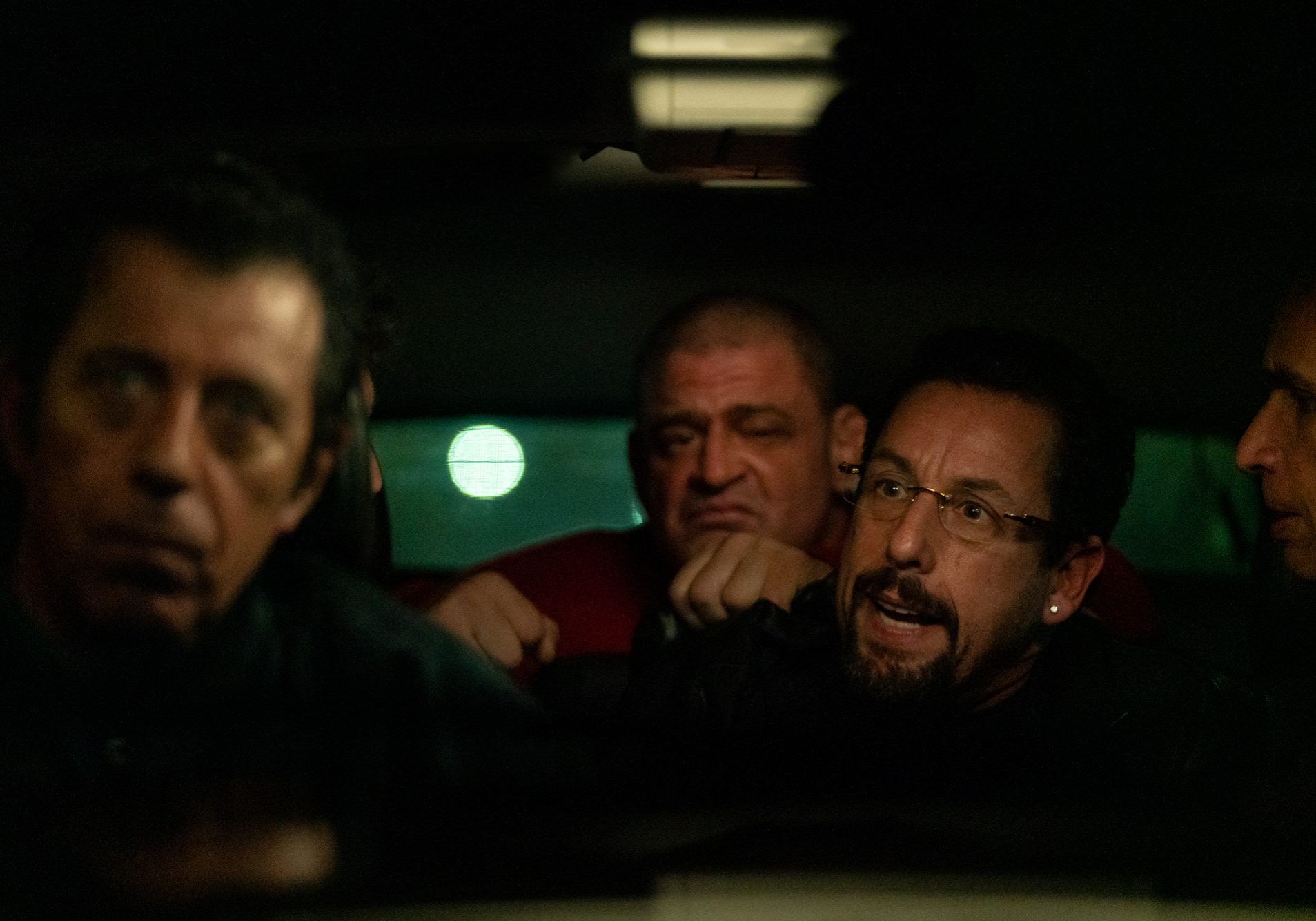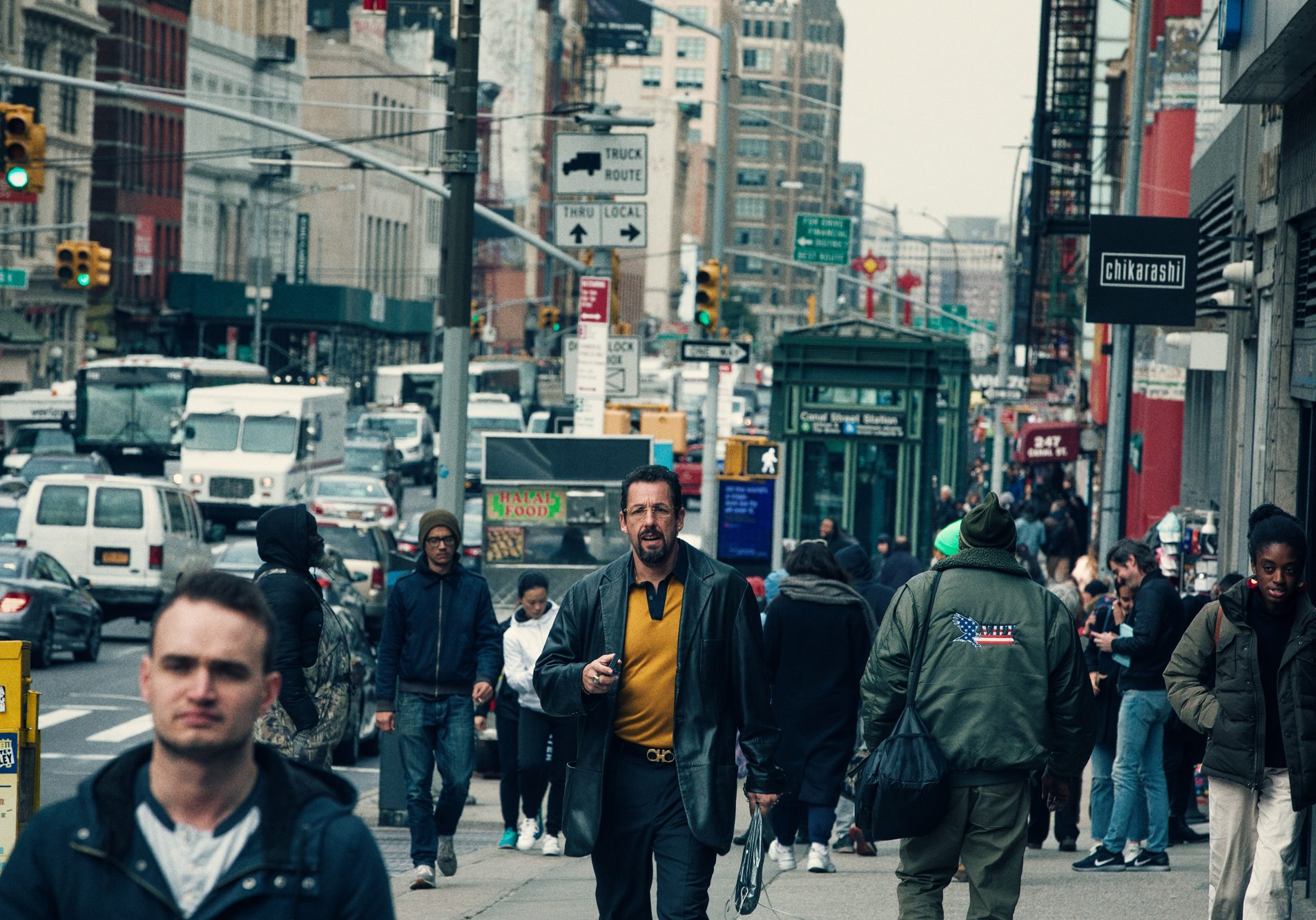Bedazzled
Darius Khondji AFC ASC / Uncut Gems

Bedazzled
Darius Khondji AFC ASC / Uncut Gems
Filmed predominantly on Kodak 35mm film, Uncut Gems, the high-stakes, high-anxiety thriller directed by Benny Safdie and Josh Safdie, received critical acclaim and multiple awards after releasing in cinemas in December 2019 by A24.
Along with its screenplay, direction, editing and central performance by Adam Sandler as New York jeweler Howard Ratner, the dazzling urgency of Darius Khondji AFC ASC's celluloid cinematography also received much of the praise.
The film follows Howard, a charismatic New York City jeweler and gambling addict, who is always on the lookout for the next big score. When a rare black opal enters his possession, Howard goes out on a limb with a series of high-risk deals that could lead to the windfall of a lifetime, whilst also performing the hazardous high-wire act of balancing business with tender family matters and a set of angry adversaries.
Along with Sandler, the $20 film stars actors Lakeith Stanfield, Julia Fox, Mike Francesa, Idina Menzel and Eric Bogosian, with Canadian singer/songwriter The Weeknd playing himself, plus former professional basketball player Kevin Garnett portraying a fictionalised version of himself.
Uncut Gems was chosen by the National Board Of Review as one of the top ten films of 2019, with Sandler winning Best Actor. The film also became one of A24's highest-grossing releases, having made $47.7 million at the box office, before streaming worldwide, excluding America, on Netflix.

"I loved the crazy, tension and psychological energy of Josh and Benny's script and their study of Howard's hard-bitten character," says Khondji, who was first introduced to the directing duo by his daughter, Marie-Louise, an associate producer on their 2014 movie Heaven Knows What. This connection led to Khondji collaborating with the Safdies on Jay-Z's Marcy Me music video before being asked by them to shoot Uncut Gems.
"This was an epic story of a man living a relentlessly crazy existence in the metropolis of New York City," Khondji says. "Benny and Josh wanted to shoot on film, which I love too, so that was an easy win. But, they also wanted Uncut Gems to capture the realism of New York, with a garish and gritty look, inspired visually by the kinetic photography of filmmakers such as Robert Altman and the post modern architecture in the city, which I found rather ugly. I am more disposed towards glamorous and exciting visuals and quickly realised they did not want a pretty-looking result.
"Also, the way in which they wanted to shoot Uncut Gems, with extremely long lenses, tracking shots using extremely long lenses, plus zooms, meant I was out of my comfort zone right from the start. I would never recommend any filmmaker to work like that. But, I like being pushed in ways I have not experienced before. So I accepted their enthusiasm, and my methodology was to let them shoot what they wanted, in the way they wanted to do it."
Principal photography began in September 2018, in New York City, concluding 29 production days later in November. Filming took place at exterior and interior locations around New York's renowned Diamond District on 47th Street, which Khondji kept simple using available light or by filling the frame with front and top light. Howard's jewelry shop - a brightly-lit environment, which needed a distinctive, gaudy palette of cyans, greens, pinks and bright whites - was constructed and filmed at Gold Coast Studios on Long Island.

"I was out of my comfort zone right from the start. I would never recommend any filmmaker to work like that, but, I like being pushed in ways I have not experienced before."
- Darius Khnodji AFC ASC
After extensive 35mm film testing, Khondji framed the action in widescreen 2.40:1 aspect ratio using Panavision C-series Anamorphic lenses - including 75mm, 180mm, 250mm and 360mm focal lengths - fitted to ARRI ST and LT cameras. He selected just one stock for the production, Kodak Vision3 5219 500T, pushed by one stop at Kodak Film Lab New York, to help encourage the texture of grain in the image.
"The choice of Anamorphic was a choice we made together," he says. "After reading the script, and listening to Josh and Benny talk about the presence they wanted for Adam's character, we thought it would be appropriate to pick-out and isolate him from the wallpaper of the backgrounds and to make his close-ups look larger-than-life.
"Of course, widescreen can be used to convey the epic nature of the story, but Anamorphic can also act like a magnifier. Josh and Benny like telling stories close-up to their characters. They loved how the long Anamorphic lenses rendered the actors' faces, and felt it was perfect for Howard."

Khondji adds that the talents of camera operator Maceo Bishop, together with focus puller Chris Silano, and the use of a Preston Light Ranger focus assist system, significantly aided the sharpness of the image during the many floating camera moves. "We could have never been able to shoot with so much freedom without Maceo or Chris - they were both great, and the Light Ranger proved a great asset in the look of the film."
Regarding his choice of 500T 5219, Khondji says, "Knowing we were going to shoot at pace, and with lots of energy, I decided to keep things as simple as possible by using just one stock. The 500T is great as you can use it for everything - from the brightest moments on a day exterior to the darkest moments on nighttime interiors - and have a consistent look through the overall production."

All scenes were shot uncorrected, apart from the daylight exteriors, when an 812 filter was used to apply a slight correction to the 500T colour negative.
From an aesthetic standpoint, grain was important in the cinematic language of the film. "I don't like the image to be too clean, as it just does not serve the purpose of storytelling, and Josh and Benny are of the same mind," Khondji declares. "We all wanted texture from the grain. We shot tests of interior and exteriors, experimented with different types of push and pull processing at the lab, and felt that pushing by one stop was the formula that gave us the nicest result in terms of texture. We shot the whole movie pushed by one-stop."
For practical reasons, Khondji had to use digital for a handful of shots, and it was up to colourist Damien Van der Cruyssen at The Mill NY to match the binary footage with the analogue film for a coherent look. All of the 35mm film negative was ARRISCAN'd at 4K and Van der Cruyssen created custom LUTs to blend the digital footage with the film scans. The colourist also asked the camera crew to shoot additional grain elements on 35mm film, which were also scanned at 4K and combined over the digital scenes for a seamless result.

Speaking about the film's colour-palette, and Howard's store in particular, Khondji says, "The jewelry shops on 47th street in Manhattan are, by nature, very bright and dazzling environments, with ghastly garish colours. We lit our store set using practicals, including spots and special quartz lighting, along with Sky Panels overhead made into ceiling tiles, with everything controlled on dimmers. This allowed us to play with the different colours and levels of illumination. The tone and colour separation that comes inherently with celluloid film is quite unique. It is not something I have seen to the same level or accuracy in digital, and these scenes look amazing."
Khondji reveals that, normally, he does not enjoy revisiting movies he has shot after completion, but Uncut Gems proved a different matter.
"During production, the Safdies made it a very interesting and uplifting experience for me. They took me out of my comfort zone and into new territory. The final film has a unique look that I love, that is totally different to any other movie I have worked on before. It's also a great advertisement for what celluloid can do. I am very proud of the result."











